Connecting Rod: What is its function?
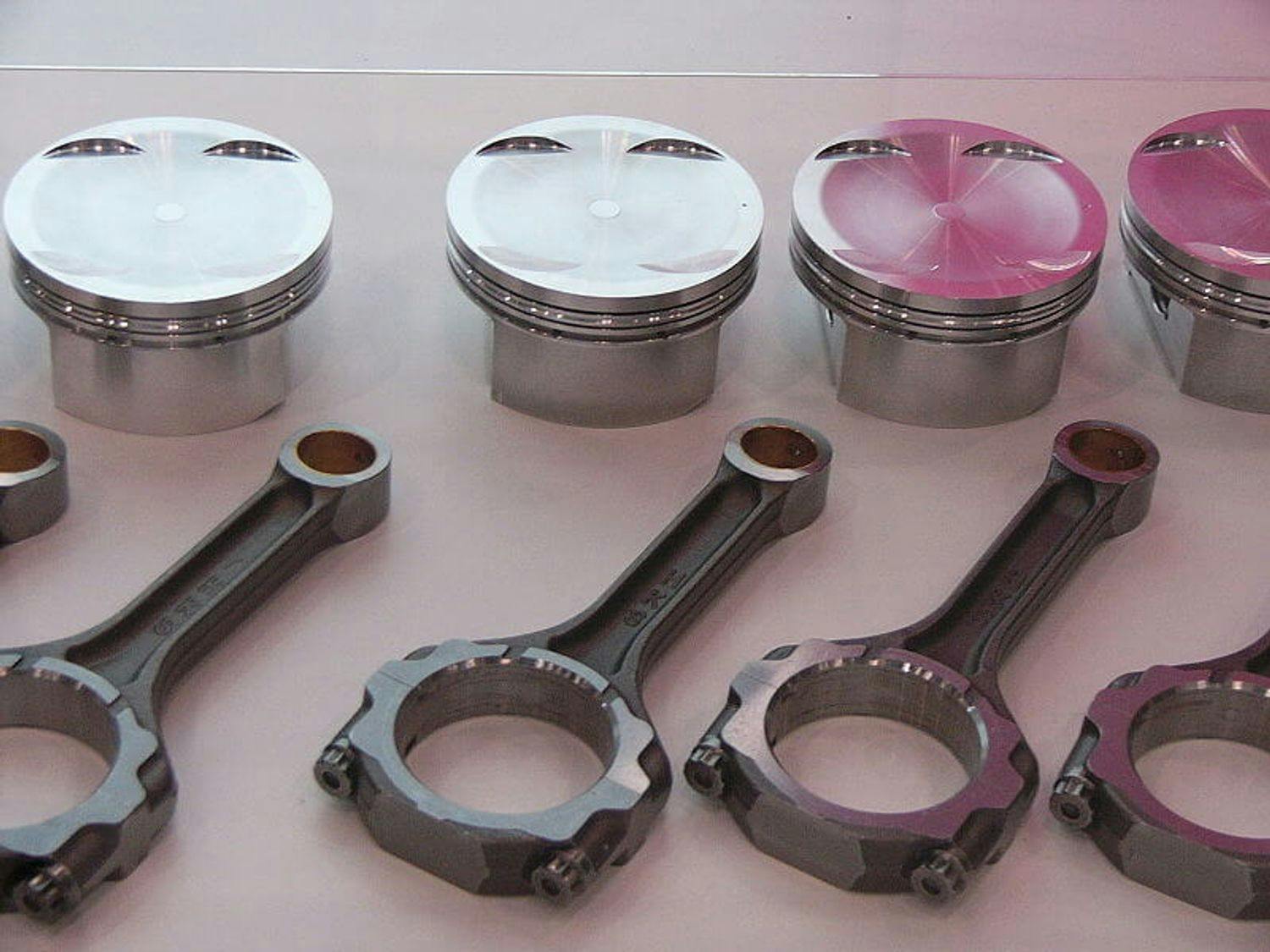
Connecting rod is a mechanical part that connects the piston to the crankshaft and ensures the transmission of forces between the pistons and the crankshaft. One part of the connecting rod is attached to the piston, while the other is attached to the crankshaft.
This article will shed light on the connecting rod's function and possible faults. In addition, we will briefly discuss its construction and mention the most common issues with connecting rods and their solutions.
Spis treści
Functions of the Connecting Rod
The connecting rod is an essential component of any engine. Its primary function is to connect the piston to the crankshaft and transfer the motion of the piston to the crankshaft, which ultimately drives the engine and generates power.

Crankshaft: What is it for, and what forces must it withstand?
In addition to transferring motion, the connecting rod supports the piston's weight and other loads. This is a critical function, as the connecting rod must be strong enough to withstand the pressure of the combustion gases in the cylinder, which can be substantial.
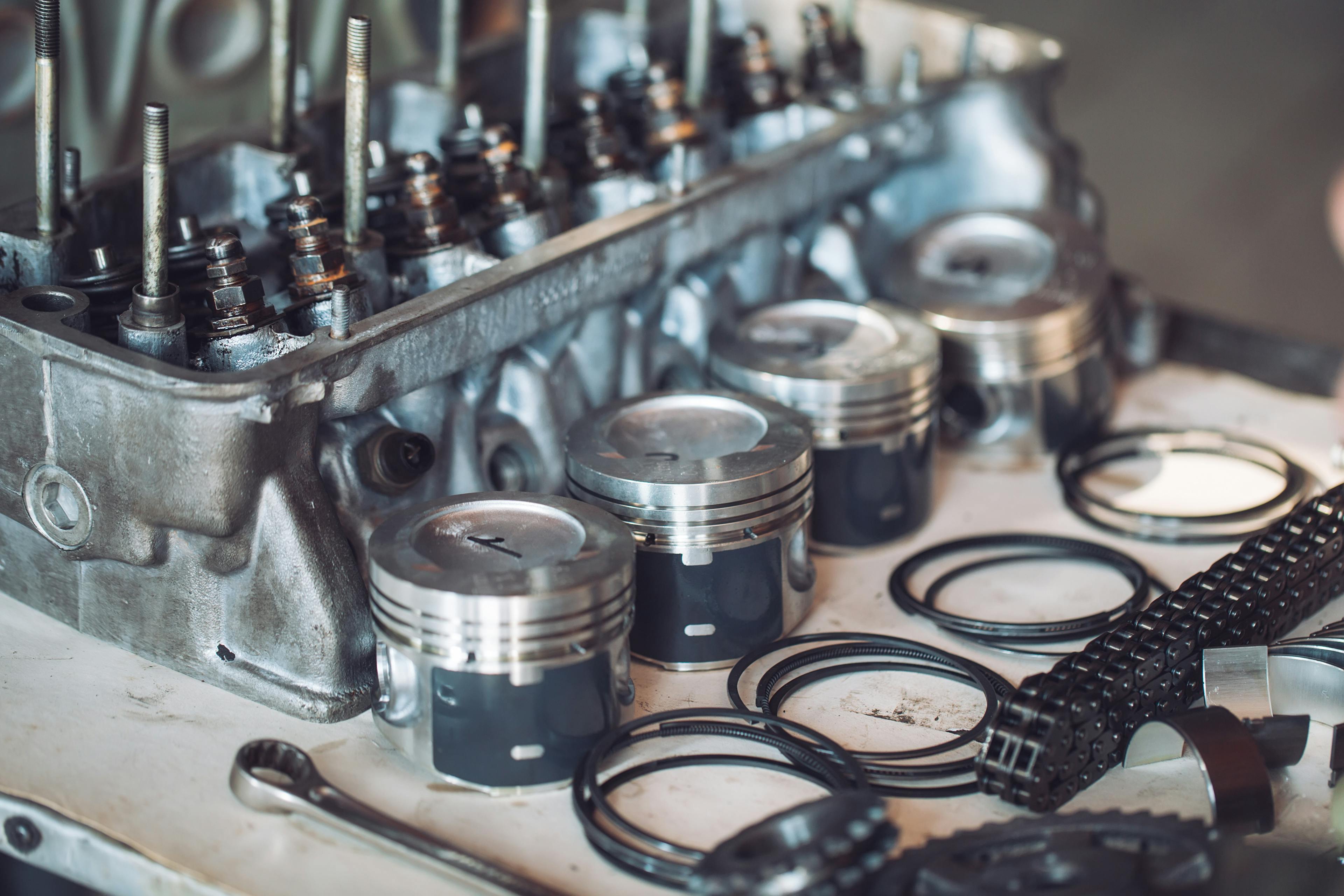
Engine Pistons: How do they work?
Another critical function of the connecting rod is to allow the piston to move freely within the cylinder. The connecting rod must move smoothly and without obstruction, as any resistance or interference could cause the engine to malfunction or even fail.
Connecting rods are one of the most stressed parts of the engine and must absorb the forces generated by the pistons as they move up and down. These forces include the pressure of the combustion gases and the impact of the piston hitting the cylinder head.
Connecting Rod needs to withstand the following:
High temperatures
High pressure
Inertial forces of own weight
The inertial forces of the pistons
The connecting rod must withstand these forces without breaking or deforming. Because of that, they are usually made of forged steel or very strong and, at the same time, light alloys. However, the materials from which the connecting rods are made differ according to the engine type.
Connecting Rod Material
The connecting rods must show high working resistance since, during the lifetime of the internal combustion engine, they perform several tens to hundreds of millions of strokes. However, the lifespan of the connecting rods used in motorsport is not a priority.
Various materials offer unique properties that make them suitable for different applications. Three common materials for connecting rods are steel, aluminum, and titanium.
Steel is a popular material for connecting rods due to its strength and durability. It can withstand high stresses and forces during engine operation and is commonly used in high-performance and heavy-duty engines.
Aluminum is a lightweight material with good thermal conductivity. It can dissipate heat quickly and reduce the risk of engine damage due to overheating. Aluminum connecting rods are often used in high-revving engines where weight reduction is a priority.
Titanium is a solid and lightweight material, making it an ideal choice for high-performance and racing applications. However, titanium is also expensive, making it less common in mass-produced engines.
Connecting rods used in motorsport are made of aluminum or titanium alloy. The advantage of connecting rods made of aluminum alloy is their lower weight, thanks to which the inertial forces are reduced, and thus it is possible to achieve higher engine speeds.
The disadvantage is the short lifespan of such connecting rods. Titanium alloys are solid and lightweight, but this material is costly and sensitive to surface damage.
Parts of Connecting Rod
The image below shows the construction of the connecting rod but also includes a piston. However, the piston is not part of connecting rod, so think about the construction of connecting rod without the piston.
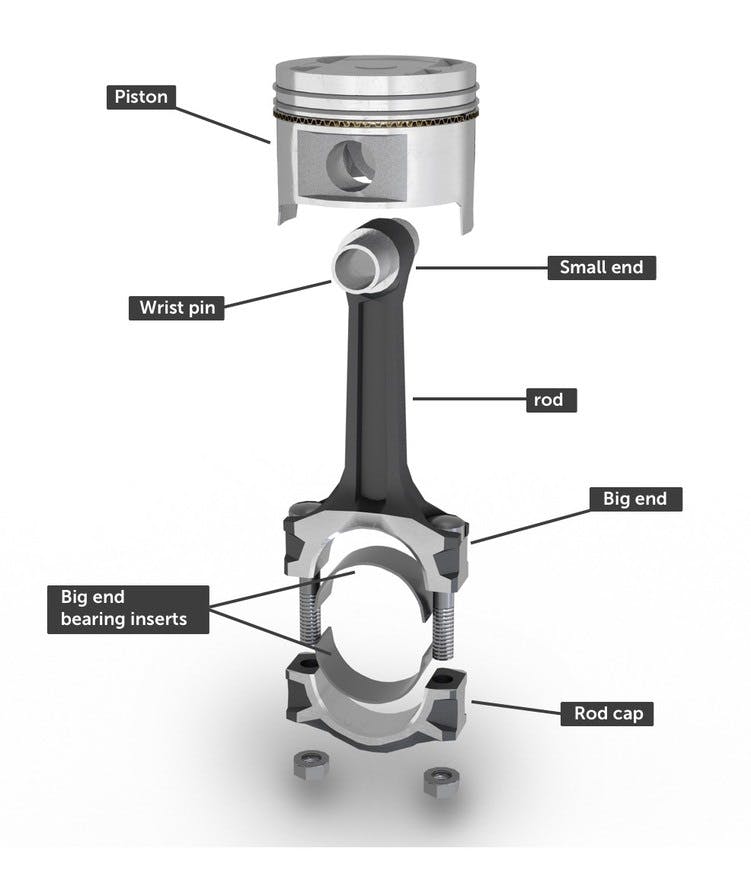
1. Rod body
The main part of the connecting rod is the rod body, typically constructed from robust and durable steel. It has a cylindrical shape with rounded ends and is specifically designed to withstand the stresses and forces experienced during engine operation.
2. Two ends - The big and small end
The connecting rod has two ends: big and small. The big end is the larger and rounded end that attaches to the crankshaft, while the small end is the smaller and rounded end that attaches to the piston. The rod body connects the big and small ends and is designed to pivot and rotate relative to each other.
3. Wrist/gudgeon pin
The wrist pin, also known as the gudgeon pin or piston pin, is a small cylindrical component that attaches to the piston and extends into the small end of the connecting rod. The wrist pin allows the connecting rod to pivot and rotate relative to the piston as the crankshaft rotates.
4. Crank pin
The crank pin is a cylindrical component that attaches to the crankshaft and extends into the big end of the connecting rod. The crank pin allows the connecting rod to pivot and rotate relative to the crankshaft as the piston moves up and down in the cylinder.
5. Bearing inserts
Connecting rods typically have bearings at both the big and small ends to enable smooth pivoting and rotation. These bearings can be made from bronze or low-friction synthetic polymers.
6. Bolts and nuts
Connecting rods are often held together with bolts and nuts, which make them easy to disassemble and reassemble for maintenance or repair. These bolts and nuts may be made from various materials, such as steel or an alloy.
Types of Connecting Rod
Plain type rods
Fork and blade rods
Forged rods
Master and slave rods
Cast rods
Billet rods
Powered metal conrods
1. Plain Type Rods
Plain-type connecting rods are commonly used in inline and opposed engines. They have a simple design with a big end attached to the crankpin and fitted with a bearing cap.
The bearing cap is mounted using a bolt or stud at the end of the connecting rod. Replacing the connecting rod in the same cylinder and relative position is essential to maintain proper fit and balance.
2. Fork and Blade Rods
V-twin motorcycle and V12 aircraft engines commonly use fork and blade connecting rods. Each pair of engine cylinders has a forked rod divided into two parts at the big end, and a blade rod is tapered to fit this gap in the fork.
This design eliminates the rocking couple that occurs when the cylinder pairs are balanced along with the crankshaft. In the big-end bearings type of arrangement, the fork rod has a single wide-bearing sleeve that extends over the entire rod width, including the central gap.
The blade rod runs outside this sleeve, not on the crankpin. This causes the two rods to move back and forth, reducing the force on the bearing and the surface speed. Still, the bearing speed reciprocates instead of continuously rotating, which can be a significant issue for lubrication.
3. Forged Rods

Some connecting rods are manufactured by forging, where a grain of the material is forced into the desired shape. The material may be a steel alloy or aluminum, depending on the required properties.
Chrome and nickel alloy steel are commonly used, increasing the connecting rod's strength. The end product is not designed to be brittle, making it a durable engine option.
4. Master and Slave Rods

Radial engines typically use master-and-slave connecting rods. In this system, one piston consists of a master rod with a direct attachment to the crankshaft, while other pistons connect their connecting rods to the rings surrounding the edge of the master rod.
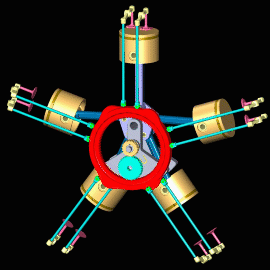
However, the disadvantage of master-slave rods is that the stroke of the slave piston is slightly larger than that of the master piston, which increases the vibration in the V-type engine.
5. Cast Rods
Manufacturers prefer cast rods because they can handle the load of a stock engine. They require a low cost of production and cannot be used in applications of high horsepower. Cast rods have a noticeable seam in the middle that separates them from the forged type.
6. Billet Rods
Billet connecting rods are designed from steel or aluminum. Compared to other connecting rods, they are lighter, stronger, and have a longer lifespan. They are commonly used in high-speed vehicles and are sometimes designed to reduce stress risers and ease into the natural grain of the billet material.
7. Powered Metal Conrods
Connecting rods made from power metal is a suitable choice for manufacturers. A metal powder mixture is pressed into the mold and heated to a high temperature to create a solid form.
The product may require light machining, but it comes out of a finished product mold. Powder metal conrods are less costly than steel and are stronger than cast rods.
Faults of Connecting Rods
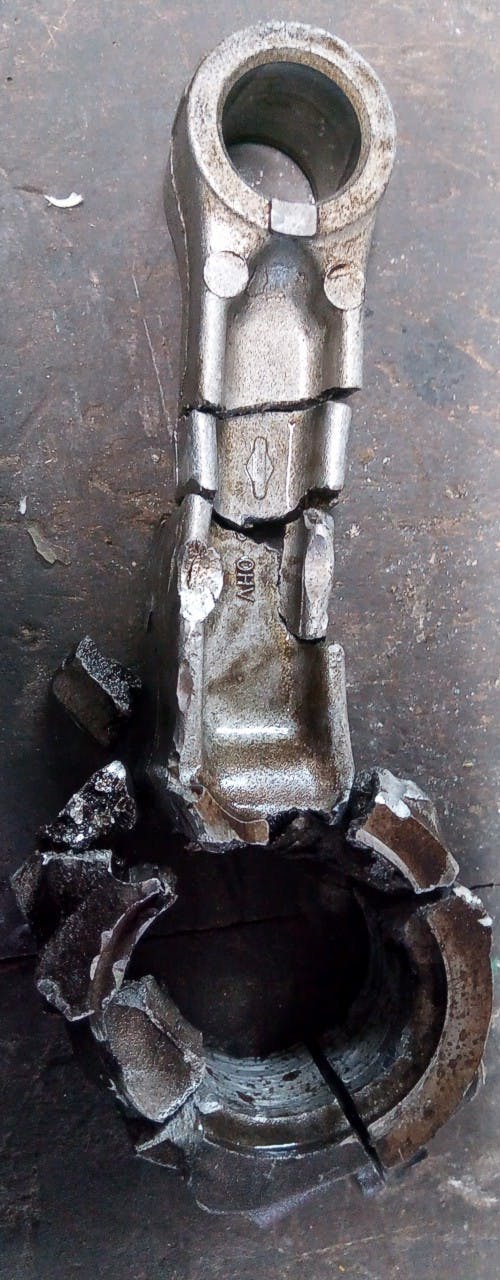
One of the most common faults of a connecting rod is fatigue. This occurs due to the continuous compression and stretch of the rod during the engine's operation, which eventually causes wear and tear until the rod breaks. Lack of engine oil and dirt in the engine can also worsen this problem.

Engine Oil Classification Explained
Hydrolock is a second possible fault and occurs when water enters the piston chamber and causes deformation of the connecting rod. This can happen when vehicles pass through flooded roads. If too much water enters the cylinder, the spark can cause the rod to tilt or break, resulting in significant damage.
Over-revving is another type of fault and occurs when the tachometer displays a red color, indicating that the position of the connecting rod is in danger—the forces the rod has to withstand increase dramatically at higher revolutions, which can lead to failure.
Finally, pin failure can also cause catastrophic engine failure. When the piston pin is damaged, the connecting rod moves into the engine block. This can cause heavy power loss, and the engine may stop immediately. The engine may sometimes survive, but a total breakdown is also possible.